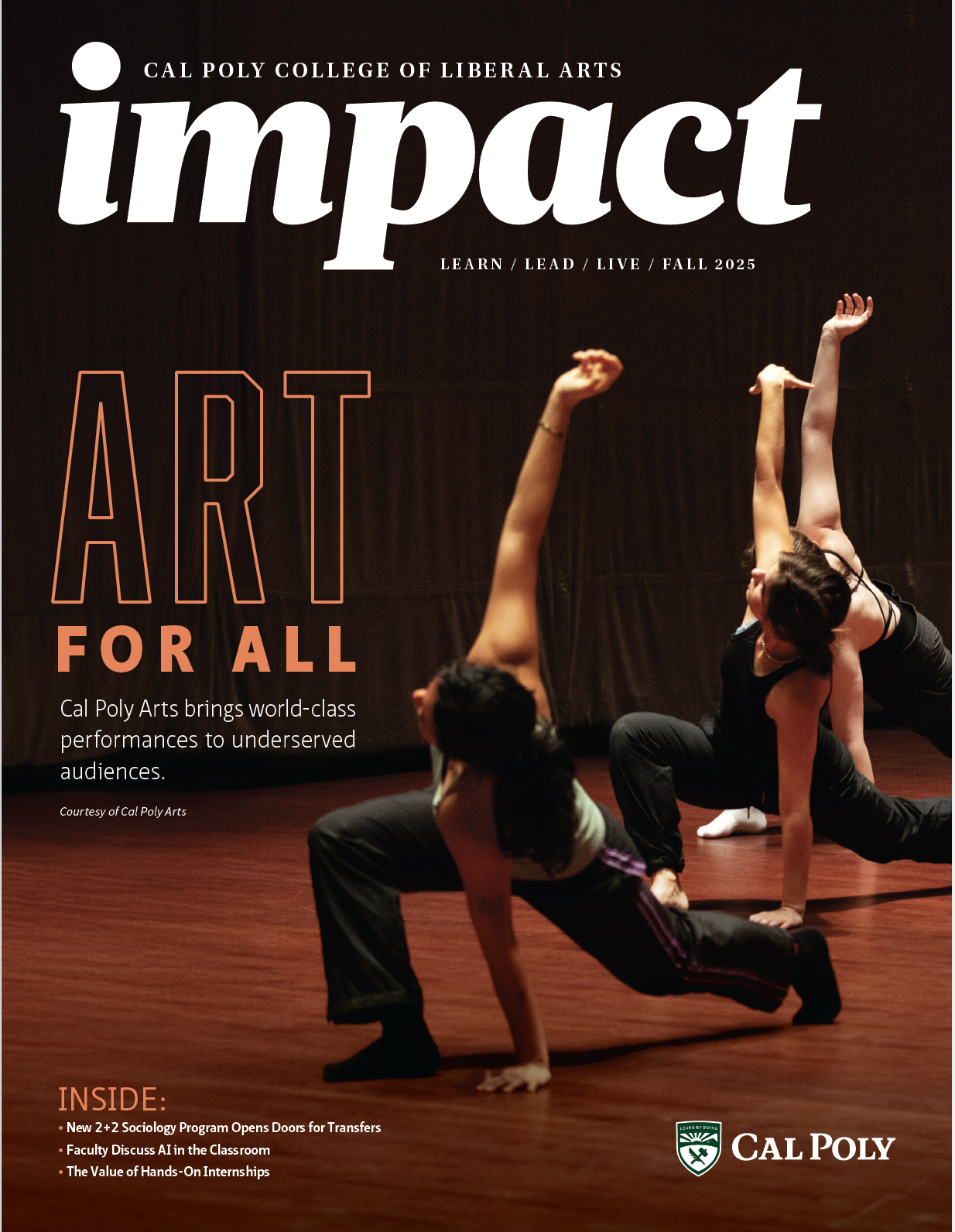Graphic Communication Students Participate in High Impact Variable Data Printing Research
Upper-level Cal Poly graphic communication students participated in the research and development work for a new printing standard during the 2013 winter and spring academic quarters.
The project was jointly undertaken by Adobe and Cal Poly’s Graphic Communication Department with software support from Adobe and XMPie, a Xerox Company. The efforts were led by Dov Isaacs, Adobe principal scientist and Cal Poly Research Professor From Industry.
The “Cal Poly Graphic Communications PDF/VT Test File Suite,” provides four sets of graphically-rich and robust files for testing and demonstrating rendering products’ compliance with the International Standards Organization (ISO) 16612-2 PDF/VT standard for printing tasks involving variable and transactional content. This standard includes the specification of document structure, layout, content data, and interaction of graphical objects in a graphics model that supports PDF’s full imaging model, including transparency and the International Color Consortium (ICC) color management.
The PDF/VT suite includes four distinct marketing campaigns using variable data printing (VDP) to generate highly-personalized, relevant, and graphically-rich printed marketing collateral to build stronger customer relationships and increase response rates significantly in comparison to static, non-personalized marketing campaigns.
“VDP can help build profitable long-term relationships with consumers,” said Isaacs. “ PDF/VT is designed to enable variable data and transactional printing in a variety of environments from desktop printers to digital production presses. It is our expectation that these PDF/VT-1 files will encourage VDP application developers as well as digital printer and Digital Front End (DFE) providers to fully support the PDF/VT standard. This would enable print service providers to more economically and easily produce VDP output using a unified PDF-based workflow.”
The results of the students’ work were presented in September at PRINT 13 in Chicago, the largest graphic communication exposition in North America, held every four years. The presentation was led by Isaacs and included panelists Howard Vogl, Cal Poly assistant professor; Gal Kahana, XMPie senior software engineer; Aron Allenson, high-speed sales support specialist for Screen; Ernie Crawford, president of Crawford Technologies; and Mark Lewiecki, senior product manager at Adobe.
The session introduced the PDF/VT test files project. The presenters discussed the Cal Poly students’ involvement and the experiences of industry professionals using the format for increased efficiency, flexibility and overall throughput in the production of attention-getting, personalized content for direct mail and other promotional documents. Attendees included printing managers, digital press operators, direct marketers, designers, advertising agency personnel, print buyers, solution providers, equipment vendors, and those who wanted to take variable data printing to a new level.
“The PDF/VT project further demonstrates the relevance of Cal Poly’s Learn by Doing teaching approach and student involvement in real-world applications for the graphic communication industry,” said Ken Macro, chair of Cal Poly’s Graphic Communication Department. “Dr. Isaacs’ involvement as a Research Professor From Industry added tremendously to the knowledge that the students gained about sophisticated technology driving the field.”
A publication was produced that documents the test suite and details about the PDF/VT test files, their characteristics, use, and restrictions of use and release. The publication and test files are available online as a free download via the PDF Association’s website.




